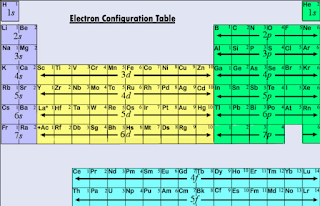Helium, a chemical element with the symbol He and atomic number 2, is a colorless, odorless, tasteless inert gas. It is the second lightest and abundant chemical species after hydrogen. It has the lowest boiling point among the elements in the periodic table.
It is mostly found in a free state and formed in large amounts
during the nuclear fusion of hydrogen in stars. Helium is the only element that
cannot be solidified by sufficient cooling at normal atmospheric temperature
and pressure. About 23% of the mass of the universe is constituted in the form of
helium and mostly helium is founded in the concentrated form inside stars.
You are here to know valence electrons and the valency of
helium, aren’t you? But before that let's have some ideas about what these terms
are:
Difference Between Valence Electrons and Valency
Valence electrons are the total number of electrons present
in the outermost shell of an atom (i.e. in outermost orbital). The valence
electrons for a neutral atom is always definite, it cannot be varied (more or
less) in any condition for a particular atom and may or may not be equal to its
valency.
Valency is defined as the total number of electrons an atom
can lose, gain, or share at the time of bond formation to get a stable
electronic configuration i.e. to complete an octet. The valency of an atom can
be variable in different compounds or chemical reactions due to the different
bonding circumstances. Most of the time valency varies/changes due to change in
oxidation and reduction states.
Helium (He) Valence Electrons
There are four simple steps to find out the valence
electrons for helium atom which are:
Step 1: Find the Atomic Number
To find out the atomic number of helium, we can use the
periodic table. With the help of the periodic table, we can easily see that the
atomic number of helium is 2. As its atomic number is 2, it has two protons,
and for neutral helium, the number of protons is always equal to the number of
electrons i.e. have two-electron in their nucleus.
Step 2: Write Electron Configuration
Electron configuration is the arrangement of electrons on
the orbitals. The helium atom has only one electron on its shell, we have to
put only one electron in its orbital and that will go in the 1s orbital as the S
orbital can hold a maximum of two electrons, and is closer to the nucleus.
Helium electron configuration He (2) = 1s2 (complete
configuration).
Step3: Determine Valence Shell
As we know, the valence shell of an atom can be found from
the highest number of principle quantum numbers which is expressed in the term
of n, and in 1s2, the highest value of n is 1 so that the valence shell of He
is 1s2.
Step 4: Find Valence Electrons
The total number of electrons present in the valence shell
of an atom is called valence electrons, and there is only one electron present
in the valence shell of helium (1s2). Thus, helium has two valence electrons.
Valency of Helium (He)
There are many different ways to find out the valency of an
atom which reflects the ability of an atom to bond with other atoms. Valence
describes how easily an atom or a free radical can combine with other chemical
species. The valency of an atom is determined based on the number of electrons
lost, gained, or shared with another atom at the time of bond formation.
An atom is said to be stable when its outermost shells have
eight electrons (except H & He). If the total number of electrons in
outermost shells is between one to four, the atom has positive valency and if
electrons are between four to eight, the valency is calculated by subtracting
from eight and valency will be zero. Atoms having four outermost electrons
possess both positive and negative valency, and atoms having eight outermost
electrons, valency will be zero (i.e. noble gases).
Noble gases like helium have two valence electrons so it
does not require to lose or gain electrons to complete its energy shell i.e. stable
duplet. So that they do not have any tendency to combine with other elements
which makes the valency of helium zero.
We can also find the valency of helium with the help of the periodic
table. As helium belongs to group 8A which are groups of noble gases having
valency zero.
Note: Helium is the only noble gas that has a complete duplet
state, the rest of all noble gases have complete octet states.



Post a Comment